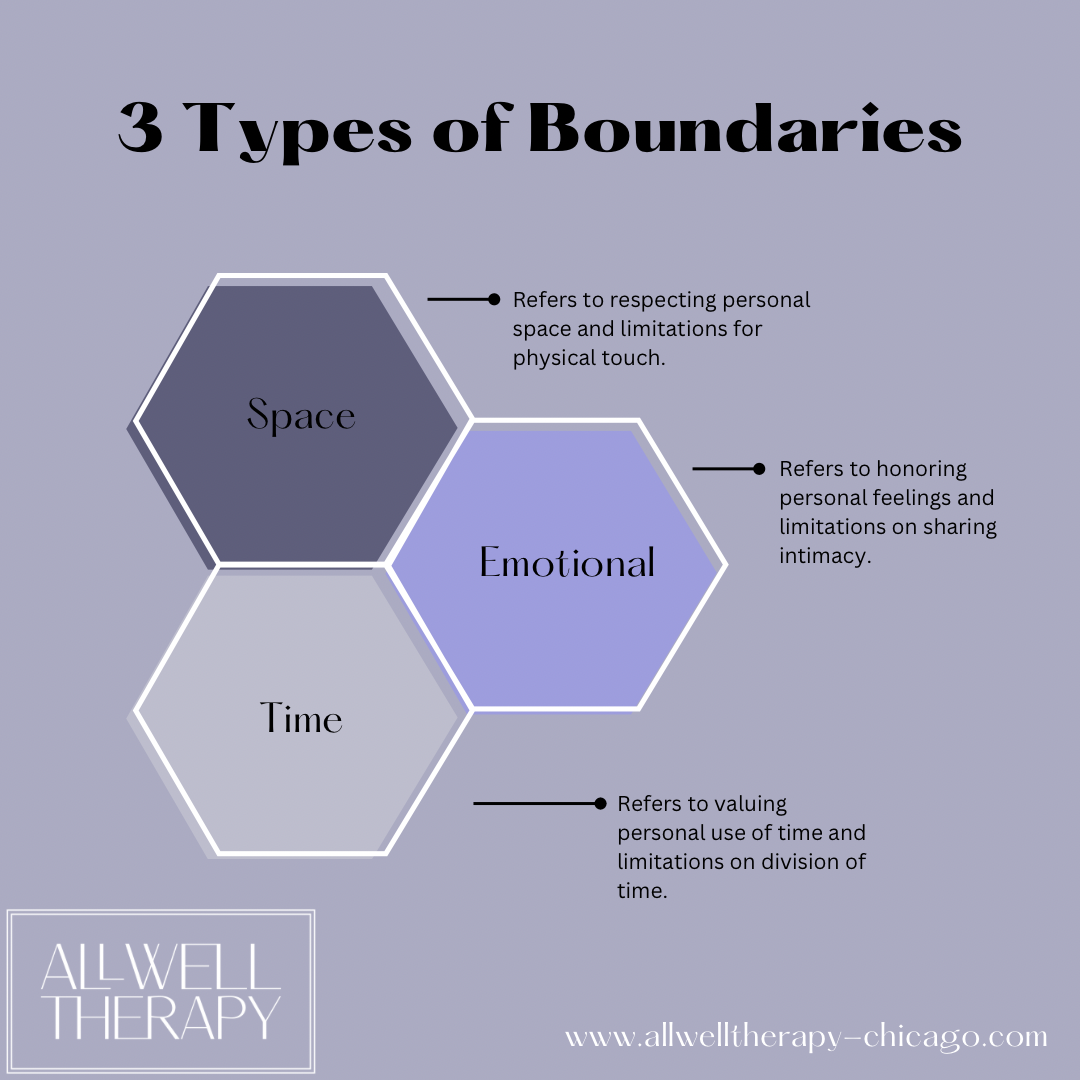How To Set Healthy Boundaries
Boundaries are those invisible lines that separate our individual selves from others. They can act as protective shields that help make sure our needs are met, our values are respected, and our relationships thrive. They can also in part help us maintain a strong sense of self to better navigate the complexities of life without compromising our values or authenticity. Overall, boundaries are important for maintaining our mental and emotional wellbeing. A person with healthy boundaries can say “no” to others and set limits but can also be open and intimate with others.
Boundaries can be broken into 3 categories: Space, Emotional and Time. Space boundaries refer to respecting our personal space and our limits on physical touch. Emotional boundaries refer to respecting the expression of our emotions and limits on sharing intimacy. Time boundaries refer to respecting our personal use of time and how we go about dividing our time. There are many boundaries that fall within each category. Each boundary can be defined by you and what feels healthy for you. Knowing your boundaries can make a big difference in being able to set / assert them. Also know that our boundaries can evolve and grow throughout our lives, so it is okay if your boundaries change.
Now that boundaries have been defined. Let’s talk about how to set healthy boundaries. In general, don’t forget to identify your boundary, communicate what you need, and why it is important. In this article we will elaborate on how to set healthy boundaries within each category. You can use this list as a starting point to setting boundaries in your life.
Space Boundaries
Like mentioned earlier space boundaries have to do with our personal space and physical touch. Healthy space boundaries have to do with defining what is and is not appropriate when it comes to your personal space. This can include that personal bubble around us of appropriate distance we want people to be. And it can include what is considered our personal space in the environment (i.e., a private bedroom, or private locked office).
Identify Space. Make it clear to yourself and others what is and is not included within your personal bubble.
Set Expectations. Make it clear how you want others to interact with you and your personal environment.
Emotional Boundaries
Emotional boundaries are related to our personal feelings. Healthy emotional boundaries have to do with respecting / honoring feelings and when it is or is not appropriate to share intimate feelings with others. This can include being vulnerable with others about how we feel and our comfort levels around intimacy. It can also include how we want others to treat us.
Set Expectations. Make it clear how you want others to respect your feelings and intimacy.
Express Yourself. Express how you feel honestly and address any problems with the person directly instead of waiting.
Time Boundaries
Time boundaries include how we decide to spend our time. Healthy time boundaries have to do with setting aside the appropriate amount of time for various aspects of our lives. This can include prioritizing and reserving time for things in our lives without overcommitting.
Identify Priorities. Make a todo list for professional and personal obligations so that you are aware of where your time needs to be spent.
Hold Self Accountable. Don’t forget to actually make your obligations a priority that you respect.
Communicate. Tell others around you time commitments and your limitations with time.


